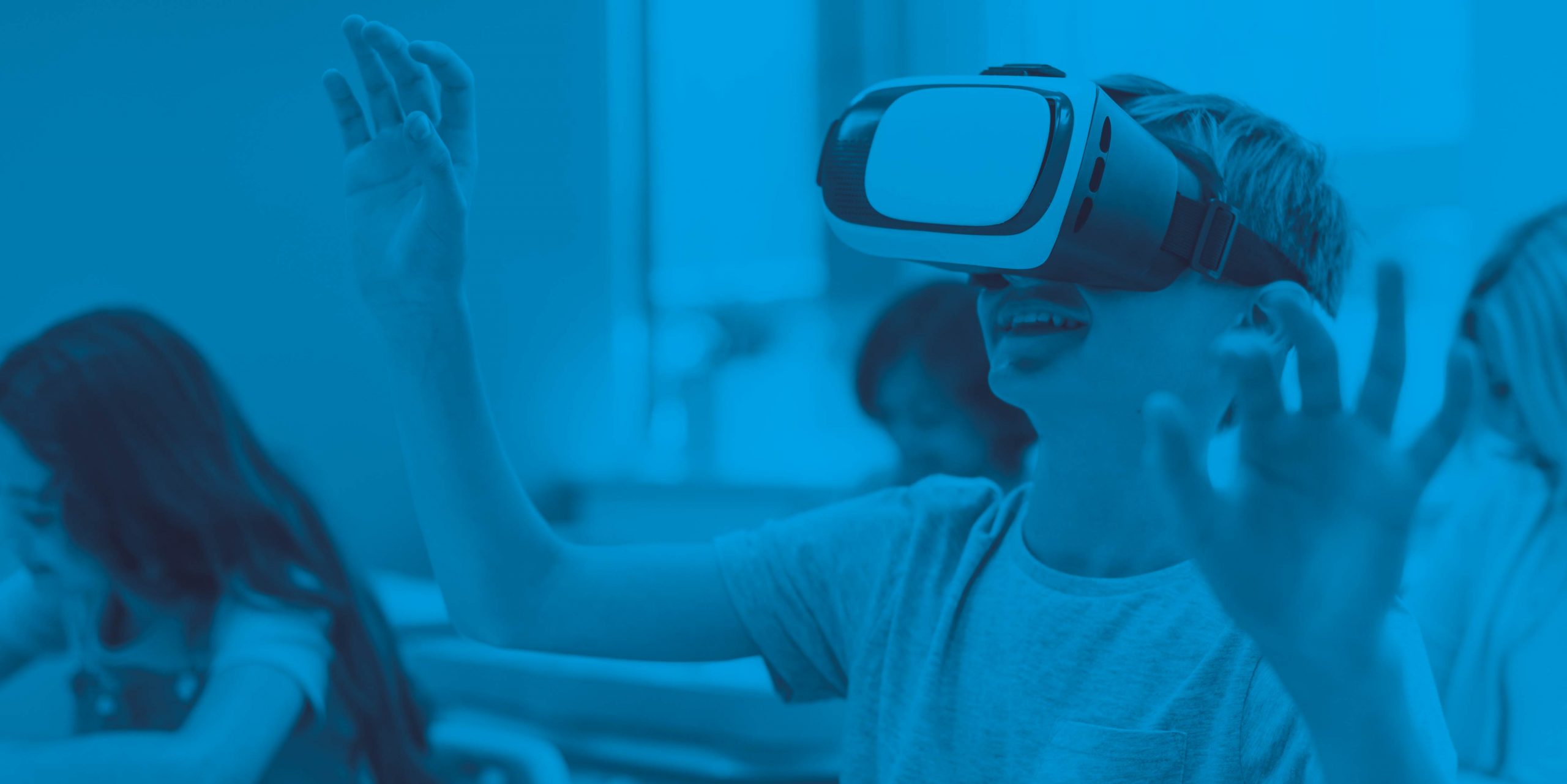by Ana Moreno Salvo
Social changes, technology, and the psychology of learning and neuroeducation show how the way students learn has changed, and, therefore, the way we teach must also be transformed. All data is just a click away. We live connected and are constantly bombarded by information, yet it is chaotic. Today’s young people have all the information at their fingertips, but who can help them organise and understand it? Who can get them to learn from it effectively?
Teachers’ role in the digital age
Carbonell (2012)1 asserts that the important thing is not to collect a lot of information but to know how to codify, integrate, contextualise, organise, and interpret the information in order to transform it into knowledge. This is where teaching comes into play and why it is becoming increasingly crucial. According to González et al. (2015), one of the most significant obstacles to the use of ICT in education is the role played by schools in driving pedagogical changes. They say that it is essential to rethink structural aspects related to pre-service and in-service teacher training and infrastructure, as well as the school’s educational models and how they affect the organisation of the institutions.
Teachers must take on the role of guides and help young people to understand and interpret the avalanche of information they face to contribute to generating knowledge from it and to learn how to learn. To accomplish this, future generations must be trained in the use of technology, new languages, and new ways of interacting with each other.
Future generations need to be trained in the use of technology, new languages, and new ways of interacting with each other

The teaching profession is especially important for social progress, and pre-service and in-service teacher training is extremely important in order to be able to meet the demands of changing curriculum.
In other words, there is essential for teachers to know how to make the right decisions to generate learning experiences in digitalised environments, and to make use of methodologies that promote the acquisition of competences that help students to develop in today’s social and cultural context.
As stated by UNESCO (2015)2, “Teachers should be encouraged to continue learning and developing professionally…The missions and careers of teachers must constantly be recast and reconsidered in the light of new requirements and new challenges to education in a constantly changing globalized world”.
In the opinion of Valverde et al. (2010)3, integrating ICT in teaching is complex and multidimensional and requires teachers to: 1) understand concepts and procedures via ICT; 2) develop teaching strategies that use ICT to teach curricular content; 3) know the difficulties in learning and how ICT can help overcome them; and 4) know students’ starting point and the epistemology of the curricular content to build on their pre-existing knowledge with ICT. But this knowledge exceeds that possessed by a curriculum content expert, an ICT expert (engineer) or an education expert and therefore calls for a rethinking of teacher training.
In this context, it is essential to redefine and rethink the role of the teacher to adapt it to the new scenarios. We need flexible, dynamic teachers who distance themselves from the traditional ways to instead create new forms of interaction where technology is an educational means and not an end (Cabero, 2015)4. In addition, teachers have the duty to encourage their students to think critically and solve problems today, and ICT is a means to attain knowledge (Durán et al, 2020)5.
Students’ role in the digital age
Just as teachers have been gaining a new role in recent years, students’ role in education has also been accentuated. The education system has begun to leave behind memorisation to instead provide students with a critical sense and understanding of the world (Imbernón, 2011)6. To this end, the globalised models implemented in today’s classrooms consider students the protagonists of their own learning, transferring the common thread of the subjects to the students and, consequently, to their abilities, interests, and motivations (Zabala, 1999)7. Students should be aware that these new models empower them to take decisions, participate, have influence, and actively mobilise within the context (Durán et al., 2020)8. Likewise, it is essential for students to acquire multiple skills that will help them to function in the digital age.
In addition to the effective and critical use of technology, there is a need to acquire other types of skills, known as soft skills, such as leadership, collaboration, creativity, learning to learn and critical thinking, which, according to Torres (2022)9, are essential for success in both personal and professional life.

In addition to the effective and critical use of technology, there is a need to acquire other types of skills, known as soft skills
According to Monereo and Badía (2013)10, there are at least seven ways learning is transformed by the use of ICT in the classroom: 1) new educational situations and tasks arise; 2) ICTs are an optimal medium for competence-based learning and solving authentic problems; 3) they facilitate self-regulation and co-regulation of learning; 4) they favour cooperative learning; 5) they allow access to countless digital contents; 6) the influence of ICTs has implications in individual learning processes, expanding the possibilities of learning and providing resources that become cognitive tools; and 7) they improve the assessment processes of student learning.
The school’s digital competence
In order to move forward, it is essential for educational organisations to become digitally competent as well. DigCompOrg is the first European framework for Digitally Competent Educational Organisations. It was published by the JRC IPTS (Institute for Prospective Technological Studies of the Joint Research Center) in December 2015. After the initial studies, the research team concluded that even if there were frameworks/tools relating to the use of digital technologies by educational organisations in different countries, a systemic approach had not yet been applied and there was no evidence of a common conceptual approach. This was fertile ground for a recommended European reference framework that would adopt a systemic approach and add value by enabling comparability and peer-to-peer learning (Kampylis, 2015)11.
The primary purposes of the DigCompOrg framework are: (I) to encourage self-reflection and self-assessment within educational organisations as they progressively deepen their engagement in learning through digital pedagogies; and (II) to enable policymakers to design, implement and assess activities that guide the integration and effective use of digital learning technologies.
In order to help educational organisations, know where they stand and how they can improve ICT integration, the EU education area has developed the SELFIE (Self-reflection on Effective Learning by Fostering the use of Innovative Educational technologies) tool for organisations. Taking a ‘selfie’ of a school means looking at different areas: school strategies, teaching practices, infrastructure, curriculum, and student experience. With SELFIE, administrators, teachers, and students can express how technology is being used for teaching and learning. After the triple query, the application gives the school a report with a snapshot of what is happening: strengths, gaps, and areas for improvement. All this information can be used to initiate a dialogue with the educational community and create an action plan to better guide integration of digital technology in the school (SELFIE, 2022)12.
The SELFIE tool is used to help educational organisations know where they stand and how to improve ICT integration

Recently in Spain, the Ministry of Education has worked with the Autonomous Communities to reach a consensus on a reference framework based on the DigComp 2.0 model of citizen competence. The current Spanish education law LOMLOE (Organic Law 3/2020a)13 states that ‘it is necessary for the education system to rise to this social reality and include a more modern and comprehensive approach to digital competence, in line with European recommendations regarding key competences for lifelong learning’. In its single article (Organic Law 3/2020b)14, the same law states that each school’s educational project must include a ‘school digital plan’. This plan should be an instrument that favours and promotes the use of digital media both in the teaching-learning processes and in the school’s management processes. The guidelines for the development of the plan are based on the European Commission’s DigCompOrg Framework for Digitally Competent Organisations.
Thus, the Spanish education system, like many others around the world, seeks to meet the digital literacy challenges that society is currently facing, given that they not only cover students/citizens but also involve the acquisition of a specific digital competence by teachers so they can practise their profession, and by schools, which should be digitally competent organisations.
References
- Carbonell, X., Chamarro, A., Griffiths, M., Oberst, U., Cladellas, R., & Talarn, A. (2012). Uso problemático de Internet y móvil en adolescentes y jóvenes españoles. Anales de Psicología / Annals of Psychology, 28(3), 789–796. https://doi.org/10.6018/analesps.28.3.156061
- UNESCO (2015). Replantear la educación: ¿Hacia un bien común mundial?. https://unesdoc.unesco.org/ark:/48223/pf0000232697
- Valverde Berrocoso, J., Garrido Arroyo, M. del C., Fernández Sánchez, R. (2010). Enseñar y aprender con tecnologías: un modelo teórico para las buenas prácticas educativas con TIC. Education in the Knowledge Society (EKS), 11(1), 203–229. https://doi.org/10.14201/eks.5840
- Cabero, J. (2015). Reflexiones educativas sobre las tecnologías de la información y la comunicación (TIC). Revista Tecnología, Ciencia Y Educación, (1), 19–27. https://doi.org/10.51302/tce.2015.27
- Durán, LML. (2020). Modos de interacción en el discurso institucional educativo sobre las TIC. Revista Signa 29 (2020), págs. 203-221
- Imbernon, F. (2011). Un nuevo desarrollo profesional del profesorado para una nueva educación. Revista de Ciencias Humanas, 12 (19), 75-86.
- Zabala, A. (1999). Enfoque globalizador y pensamiento complejo. Graó.
- Durán, LML. (2020). Modos de interacción en el discurso institucional educativo sobre las TIC. Revista Signa 29 (2020), págs. 203-221
- Torres, L. (2022). Desarrollo de habilidades blandas en estudiantes. Una revisión sistematizada. CIEG, Nº 54 marzo – abril 2022 [pág. 12-22] https://revista.grupocieg.org/wp-content/uploads/2022/02/Ed.5412-22-Torres-Lilly.
- Monereo, C., Badía, A. (2013). Aprendizaje estratégico y tecnologías de la información y la comunicación: una revisión crítica. Revista “Teoría de la Educación. Educación y Cultura en la Sociedad de la Información, vol. 14, núm. 2, 2013, pp. 15-41. http://www.redalyc.org/articulo.oa?id=201028055002
- Kampylis, P., Punie, Y. & Devine, J. (2015); Promoción de un Aprendizaje Eficaz en la Era Digital – Un Marco Europeo para Organizaciones Educativas Digitalmente Competentes; EUR 27599 EN; doi: 10.2791/54070. DigCompOrg. https://sede.educacion.gob.es/publiventa/descarga.action?f_codigo_agc=17711
- SELFIE. (2022). https://education.ec.europa.eu/selfie
- Ley Orgánica 3/2020a, de 29 de diciembre, por la que se modifica la Ley Orgánica 2/2006, de 3 de mayo, de Educación. «BOE» núm. 340, de 30 de diciembre de 2020, páginas 122868 a 122953 (86 págs.). I Disposiciones generales. BOE-A-2020-17264. https://www.boe.es/eli/es/lo/2020/12/29/3
- Ley Orgánica 3/2020b, de 29 de diciembre, por la que se modifica la Ley Orgánica 2/2006, de 3 de mayo, de Educación. «BOE» núm. 340, de 30 de diciembre de 2020, páginas 122868 a 122953 (86 págs.). Artículo único. Punto 62, Apartado I. BOE-A-2020-17264. https://www.boe.es/eli/es/lo/2020/12/29/3







